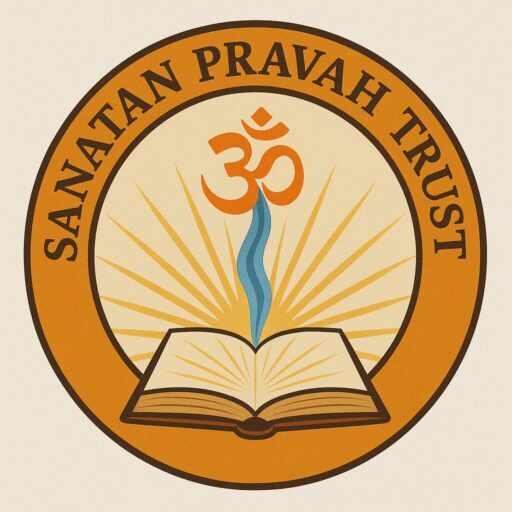Charaka Samhita: The Timeless Science of Ayurveda
Introduction:
The Charaka Samhita is one of the foundational texts of Ayurveda, the ancient Indian system of medicine. Written over 2000 years ago, it is attributed to the sage Charaka and is considered a treasure trove of medical wisdom. Along with Sushruta Samhita and Ashtanga Hridaya, it forms the triad (Bṛhat-trayī) of classical Ayurvedic literature. This encyclopedic text focuses primarily on internal medicine (Kāya Chikitsā) and provides deep insight into anatomy, physiology, diagnosis, disease prevention, treatment, and lifestyle practices.
1. Authorship and History
The original teachings of Ayurveda are believed to be divine in origin, passed down from Lord Brahma to various sages. The Charaka Samhita itself is a redacted version of the Agnivesha Tantra, an earlier work created by Agnivesha, a disciple of the sage Punarvasu Atreya. Agnivesha compiled the teachings of his guru, and Charaka later edited, revised, and expanded this work. Thus, the text came to be known as Charaka Samhita.
In later centuries, Dridhabala, a Kashmiri scholar, further revised the text, completing parts that were lost or fragmented.
2. Structure of Charaka Samhita
The Charaka Samhita is divided into eight sections (Sthānas), comprising 120 chapters in total:
- Sūtra Sthāna – General principles of Ayurveda, including lifestyle, daily and seasonal routines, dietetics, and ethics of a physician.
- Nidāna Sthāna – Causes, symptoms, and classification of diseases.
- Vimāna Sthāna – Guidelines on food, taste, examination techniques, and medical research.
- Sharīra Sthāna – Embryology, anatomy, physiology, and concepts of mind and soul.
- Indriya Sthāna – Prognosis based on sensory and physical signs, often associated with signs of impending death.
- Chikitsā Sthāna – Therapeutic management of diseases.
- Kalpa Sthāna – Preparation and use of herbal poisons and antidotes.
- Siddhi Sthāna – Success in therapies like Panchakarma (five-fold purification therapies) and other clinical procedures.
Key Philosophical and Scientific Concepts:
a. Tridosha Theory
At the core of Ayurveda is the Tridosha theory—Vāta, Pitta, and Kapha. These three doshas are the bio-energetic forces that govern physical and mental functions. Health is defined as a state of balance among the doshas, and disease arises from their imbalance.
b. Panchamahabhuta
Charaka explains that all living and non-living matter is composed of five great elements (Pancha Mahābhūtas): Earth (Prithvi), Water (Apas), Fire (Tejas), Air (Vāyu), and Ether (Ākāśa). These form the basis of human physiology and pathology.
c. Dhatu and Mala
The body is built and sustained by seven tissues (Dhatus)—Rasa (plasma), Rakta (blood), Mamsa (muscle), Meda (fat), Asthi (bone), Majja (marrow), and Shukra (reproductive fluid). Waste products (Malas) such as urine, feces, and sweat must be expelled to maintain health.
d. Mind-Body Connection
Charaka places great emphasis on the interconnectedness of the body (Sharira), mind (Manas), and soul (Atma). Mental imbalances are seen as important causes of disease, and spiritual health is essential for overall wellness.
4. Medical Ethics and Role of the Physician
Charaka held the physician in high regard and outlined strict ethical guidelines. A good physician must be:
- Skilled and well-versed in scriptures
- Compassionate and disciplined
- Committed to the welfare of patients over personal gain
- Honest, clean, and self-controlled
He emphasized the four pillars of treatment:
- Physician (Vaidya) – Skilled and ethical.
- Medicine (Dravya) – Pure and potent.
- Attendant/Nurse (Upasthāta) – Caring and experienced.
- Patient (Rogi) – Cooperative and disciplined.
5. Diagnostic Principles
Charaka advocates a holistic diagnosis through:
- Darshana (inspection)
- Sparshana (palpation)
- Prashna (questioning)
He introduced the concept of Rogi Parīkṣā (examination of patient) and Roga Parīkṣā (examination of disease). The physician must consider:
- The patient’s constitution (Prakriti)
- Disease progression
- Strength of the disease and the patient
- Digestive capacity (Agni)
6. Preventive Healthcare
One of Charaka’s most significant contributions is his emphasis on preventive medicine. He advocates:
- Dinacharya (daily routine)
- Ritucharya (seasonal regimen)
- Balanced diet (Ahāra) and sleep (Nidra)
- Ethical conduct (Sadvritta)
According to Charaka, maintaining a disciplined life is essential to prevent disease, even more than treatment after falling ill.
7. Therapeutic Techniques
Charaka Samhita focuses mainly on internal medicine (Kaya Chikitsa) but also discusses:
- Panchakarma: Five purification methods—Vamana (emesis), Virechana (purgation), Basti (enema), Nasya(nasal therapy), and Raktamokshana (bloodletting)
- Rasayana (Rejuvenation) therapy: To delay aging and improve vitality
- Sattvavajaya Chikitsa: Mind therapy for mental health
- Use of herbs, minerals, and dietary management as part of treatment
8. Charaka’s Contributions to Research and Evidence
In the Vimāna Sthāna, Charaka discusses principles akin to clinical research. He emphasizes:
- Observation and inference
- Logical reasoning (Yukti)
- Direct perception (Pratyaksha)
- Valid testimony (Āptopadesha)
He encourages the physician to be rational, scientific, and open to learning—an idea surprisingly modern for its time.
9. Relevance in Modern Times
Despite being written centuries ago, the Charaka Samhita offers insights that are deeply relevant today:
- The idea of personalized medicine through Prakriti (body constitution)
- Importance of diet and lifestyle in health management
- Holistic approach combining body, mind, and spirit
- Ethical and human-centered medical practice
Modern integrative medicine and wellness systems often mirror Charaka’s principles, acknowledging the importance of diet, emotional well-being, and lifestyle.
10. Conclusion
The Charaka Samhita stands as a timeless guide to health and healing. It is not merely a medical textbook but a comprehensive philosophy of life. Its holistic approach, scientific thinking, and ethical values continue to inspire physicians, scholars, and wellness seekers across the world.
Charaka’s wisdom reminds us that health is not just the absence of disease, but a balanced state of the body, mind, and spirit. In a world seeking sustainable and human-centered healthcare, the Charaka Samhita offers a profound and enduring legacy.
